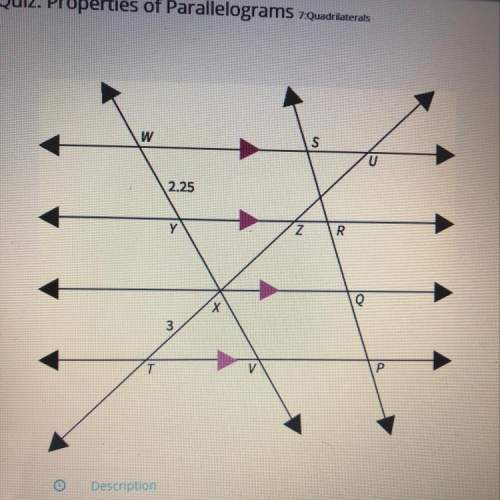
Mathematics, 30.07.2021 04:30 hailscooper7363
True/False. If the answer is true, provide an explanation. If it is false, give a counter-example or an explanation.
a) Let B be a basis for R^n. The coordinate function CB is an isomorphism.
b) Let T:R^7 → R^5. If dim(Im(T)) = 3 then dim(ker(T)) = 2.
c) Letf:R^n → R^n be a linear transformation and let B1 and B2 be bases of R^n. If f is an isomorphism, then [f]B1 B2 is also an isomorphism.

Answers: 2


Another question on Mathematics

Mathematics, 21.06.2019 14:30
Given the parent function of [tex]f(x)=x^4[/tex], what change will occur when the function is changed to [tex]f(\frac{1}{2} x)[/tex]?
Answers: 3

Mathematics, 21.06.2019 16:20
The lengths of nails produced in a factory are normally distributed with a mean of 4.91 centimeters and a standard deviation of 0.05 centimeters. find the two lengths that separate the top 4% and the bottom 4%. these lengths could serve as limits used to identify which nails should be rejected. round your answer to the nearest hundredth, if necessary.
Answers: 3

Mathematics, 21.06.2019 22:00
Determine which postulate or theorem can be used to prove that lmn =nmo
Answers: 3

Mathematics, 21.06.2019 23:00
Alex measured the length of an item to be 3.7 cm. the actual length is 3.5 cm. what is alex’s percent error?
Answers: 2
You know the right answer?
True/False. If the answer is true, provide an explanation. If it is false, give a counter-example or...
Questions




Computers and Technology, 06.12.2019 20:31


Mathematics, 06.12.2019 20:31


Biology, 06.12.2019 20:31

History, 06.12.2019 20:31



Computers and Technology, 06.12.2019 20:31


Mathematics, 06.12.2019 20:31



Mathematics, 06.12.2019 20:31







